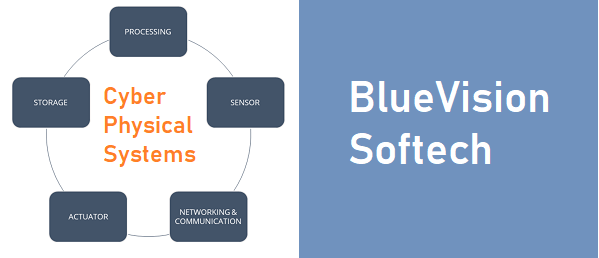Cyber-Physical Systems (CPS) are integrated systems that tightly intertwine physical components and computational elements, allowing for the seamless integration of the physical and digital worlds. CPS combines sensors, actuators, and computing systems to monitor and control physical processes, enabling real-time interaction between the physical and cyber domains.
Here are some key aspects of Cyber-Physical Systems:
Integration of Physical and Cyber Elements: CPS brings together physical components, such as sensors, actuators, and machines, with computational elements, including embedded systems, software, and networks. This integration allows for bidirectional communication, where physical data is sensed, transmitted, and processed in the cyber domain, and cyber commands are translated into physical actions.
Real-time Interaction: CPS enables real-time interaction and feedback between the physical and cyber components. They can monitor physical processes in real time, analyze data, make decisions, and control physical systems in a closed-loop manner. This real-time interaction enables rapid response, adaptability, and autonomy in various domains.
Sensors and Actuators: CPS relies on sensors to collect data from the physical environment, such as temperature, pressure, motion, or location. Actuators are used to effect changes in the physical world, such as adjusting settings, activating mechanisms, or controlling processes. These sensors and actuators provide the bridge between the physical and cyber domains, enabling information exchange and control.
Networked Communication: CPS utilizes networks to enable communication and coordination between distributed physical and computational components. These networks can be wired or wireless, allowing for data transmission, control signals, and system coordination across different parts of the system. Communication protocols and standards are crucial for reliable and secure data exchange in CPS.
Autonomous and Intelligent Systems: CPS often involve autonomous or semi-autonomous systems that can make decisions and take actions based on the analysis of sensor data and computational algorithms. They may incorporate artificial intelligence (AI) techniques, such as machine learning, optimization, or control algorithms, to adapt to changing conditions and optimize system behavior.
Application Domains: CPS finds applications in various domains, including manufacturing, transportation, energy, healthcare, smart cities, robotics, and agriculture. They enable advanced automation, process optimization, predictive maintenance, real-time monitoring, and intelligent control in these domains, leading to improved efficiency, safety, and sustainability.
Interdisciplinary Nature: CPS requires expertise from multiple disciplines, including computer science, electrical engineering, mechanical engineering, control systems, data analytics, and domain-specific knowledge. Designing and developing CPS involves understanding both the physical processes and the computational systems, as well as the interactions and dependencies between them.
Cyber-Physical Systems play a crucial role in the development of smart and interconnected systems, bridging the physical and digital realms. By combining physical processes with computational power, CPS enables advanced automation, optimization, and decision-making capabilities, leading to more efficient, intelligent, and responsive systems in various domains.




